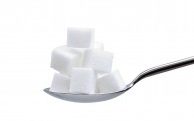Ingredient swaps
Wondering what simple changes you could make to improve the quality of your diet without a complete overhaul? Look no further than our smart swaps and tips!
Selecting healthier ingredients can have a significant impact on the nutritional quality of your meal. Use the table below to discover some healthier ingredient swaps.
| SWAP THIS | FOR THIS |
| Breads and cereals – White bread, rolls or bagels – Crackers and savoury biscuits | ✓ Wholegrain, wholemeal varieties ✓ Wholegrain varieties of plain crispbreads, which are lower in salt and saturated fat |
| Dairy Products – Cream – Sour cream | ✓ Evaporated milk, ricotta cheese ✓ Natural or Greek yogurt |
| Meat and alternatives – Meat with visible fat or skin on – Crumbed or battered meat and fish patties – Fatty processed meats such as pepperoni, salami, mortadella | ✓ Lean skinless meat options ✓ Fresh or frozen meat or fish fillets without crumbs or batter ✓ Skinless and lean processed meat varieties |
| Oils, condiments and spreads – Butter and butter blends, copha, dairy blends, ghee, lard, palm oil, tallow – Coconut cream, milk – Cream-based dressings | ✓ Poly or monounsaturated spreads. Canola or olive oil ✓ Evaporated milk with coconut essence ✓ Dressings made with poly or monounsaturated oils or dressings based on lemon juice, balsamic vinegar or yoghurt |
Tips for using less sugar

- Add vanilla, cinnamon or ground cloves for extra flavour.
- Add dried and fresh fruits to muffins, cakes, pikelets for added sweetness.
- If using canned fruit, choose fruit in natural juice and drain before use.
- Stew fruit without sugar, if fruit is tart (e.g. plum or rhubarb) add an apple for sweetness.
Note: Raw sugar, brown sugar, agave, honey, maple or golden syrup are not healthier alternatives for sugar. Whichever you choose, use it sparingly.
Tips for using less salt

- Avoid adding salt during cooking or at the table.
- Add a variety of herbs, spices, lime or lemon juice, fresh mustard, and garlic to recipes.
- Use “reduced salt” or “no added salt” canned foods.
- Limit commercial sauces and condiments such as soy sauce and tomato sauce and read the labels to choose the one with the least amount of salt (sodium).
Note: On food labels, salt is listed as sodium.
Tips for boosting fibre
- Add extra fruit and vegetables to meals and snacks.
- Leave the peels on vegetables such as carrots and cucumbers.
- Choose an oat or bran based cereal.
- Add beans or lentils to sauces.
- Snack on fruit, nuts, or raw vegetables.
Note: Fibre is found in plant foods like vegetables, fruits, grains, nuts, seeds, beans and legumes.
Remember
- Raw sugar, brown sugar, agave, honey, maple or golden syrup are not healthier alternatives for sugar. Whichever you choose, use it sparingly.
- Limit commercial sauces and condiments such as soy sauce and tomato sauce and read the labels to choose the one with the least amount of salt (sodium).
- Fibre is found in plant foods like vegetables, fruits, grains, nuts, seeds, beans and legumes.
- To increase your fibre intake, add extra fruit and vegetables to meals and snacks and leave the peels on vegetables such as carrots and cucumbers.